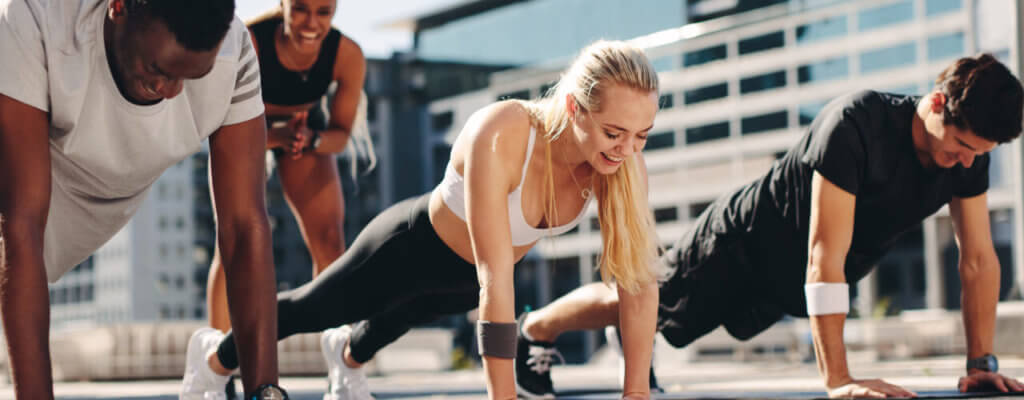Have you found that your joints and muscles bring you discomfort or feel achy and stiff after a long workout? Are you not getting the results you want even though you’re exercising every day? There might be a reason for that — you aren’t stretching enough!
Our clinic would love to help you create a customized and effective stretching routine that will improve your overall athletic performance, improve your physical health, and keep you from injuring yourself in the future. Contact us today to schedule an appointment!
5 Advantages To Stretching Regularly
Stretching gives you more energy and makes you much more flexible and limber. Research shows that stretching improves your health in many different ways!
Here are 5 advantages to adding stretching into your daily workout routine.
- Stretching eases stress. There’s a strong link between physical tension and mental tension.By decreasing your physical tension with a consistent stretching routine, you can also ease psychological stress, too. Research shows that stretching before a workout also improves your “psychological readiness” and helps you get mentally prepared.
- Stretching improves circulation. In addition to improving muscle mechanics, enhanced circulation and blood flow can speed up your recovery, reduce post-workout soreness, and increase the amount of energy you have.
- Stretching increases the range of motion in your joints. Obviously joints that move better, work better. Stretching regularly helps your joints move more easily through their full range of motion without interruption. This improves movement efficiency and function. If you’re an athlete, this means better sports performance.
- Stretching decreases muscle tension. Chronically tense and tight muscles have restricted blood flow and may not work as well. Stretching (especially with tools such as foam rollers) alleviates this tension and also helps muscles to contract and relax more efficiently.
- Stretching can reduce your risk of injury and lower back pain. Stretching prepares your body for exercise, improves posture, maximizes flexibility in the hips, shoulders, and ankles, and helps correct muscle-length imbalances. All of these are essential for improved injury prevention and spinal health, which means you have less to worry about when it comes to injuring your back.
Can I Get Better At Stretching On My Own?
Remember, it can be easy to injure yourself if you don’t know what you’re doing with your body when it comes to exercise and stretching! Not all stretches are the same. Here are 3 tips from our physical therapy staff to ensure you’re stretching properly.
- Practice dynamic and static stretches. It’s not clear that static stretching pre-workout causes injury—assuming, that is, you’ve adequately warmed up your body as previously discussed.4 In fact, studies suggest that a combination of static stretching and dynamic sports-specific movements before a workout can improve performance and optimize range of motion.3,4 Your best bet is to do both static and dynamic stretches—static isometric holds increase range, while dynamic moves prime your muscles and central nervous system for activity.
- Warming up first is key. It’s true that stretching may reduce the risk of injury, but it may actually cause tissue damage if done without a proper warm-up! Warming up ensures your tissues are warm and pliable enough to withstand the demands of stretching. Before you stretch, try jogging for a few minutes or cycling. Do something that gets your heart rate slightly elevated, your limbs moving, and your blood flowing.
- Hold your stretches long enough. A quick 30-second quad stretch isn’t going to do anything meaningful for your tissues. It’s similar to stretching a rubber band for a few seconds and then letting it go right away. Your connective tissues will just go back to their normal position after a short stretch, and this is due to a phenomenon called “creep.” Static stretches should be held for at least 90 seconds to 2 minutes in order to make noticeable changes in muscle and tissue length. Set a timer on your phone and get to stretching!
Ready To Learn More About Stretching?
You must learn to understand your body and your particular needs. No two people are alike, and no two stretching routines have to be the same! Everyone has different areas of mobility limitations, postural imbalances, adhesions, scar tissue build-up, and so on. In fact, some people have too much mobility in certain joints and should focus on stability and strengthening rather than stretching in these areas.
If you need help establishing an individualized and effective stretching and mobility routine, call our office to schedule an appointment with a physical therapist today.
Sources:
- American Council on Exercise. (2014, October 7). Top 10 Benefits of Stretching. Retrieved July 9, 2019, from
- Shaw, W., Labbot-Smith, S., & Burg, M. M. (n.d.). Stress Effects on the Body. Retrieved July 9, 2019, from
- Park, H., Jung, M., Park, E., Lee, C., Jee, Y., Eun, D., . . . Yoo, J. (2018, February 26). The effect of warm-ups with stretching on the isokinetic moments of collegiate men. Retrieved July 9, 2019, from
- Samson, M., Button, D. C., Chaouachi, A., & Behm, D. G. (2012, June 01). Effects of dynamic and static stretching within general and activity specific warm-up protocols. Retrieved July 9, 2019, from
Tags: nutrition, chronic pain, Natural pain relief, physical therapy, Natural treatment, physical therapists, aches and pains, Rehabilitation, opioids, physical health, physical activity



